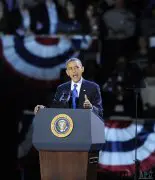As the two-year-old Satria, a Sumatra tiger, lunged and growled fiercely inside his cage when she was lifted down from the aircraft, the people around, including his new protector, Indonesian tycoon Tomy Winata, pulled back instinctively.
Satria, whose eyes radiated fierceness, has traveled two days and two nights through long trip in land and air from a village in North Sumatra where his mother was killed by poachers when he was three-month-old before arriving here in Tambling Nature Wildlife Conservation (TWNC) in the remote, southernmost tip of Sumatra Island.
The poor tiger was about to be slaughtered for skin and meat but his former owner, an Indonesian soldier, decided to sell him to local people because he could no longer feed the cub.
Tomy, who funds and manages a Sumatra Tiger Rescue Center out of TWNC, a 45,000 hectare forest and 14,082 hectare marine conservation area 250 km west of Indonesian capital Jakarta, heard Satria's story and sent an aircraft to relocate him and bring him to the TWNC.
"The tiger is the king of forest, but unfortunately there are not too many wild Sumatra tigers left, so we feed and nurture them here," said Tomy, 55, who built his business empire in property, banking, infrastructure and other industries starting with just 100 U.S. dollars 40 year ago.
The one hectare rescue center compound located deep in the jungle of TWNC provides facilities to rehabilitate and train tigers providing them with their natural habitat.
"I am very happy to adopt the tiger and I will release him into the wild after rehabilitation, maybe within two years if all goes well," the tycoon, a Chinese descent with ancestral home in Southeast China's Fujian Province, said.
The Sumatran tigers, whose number has dropped to below 400 now as a result of unabated deforestation and rampant poaching, are the smallest surviving tiger subspecies that can be found only in Indonesian island of Sumatra.
Conflicts often arise between tigers and humans as the tigers' habitat shrinks amid growing human activities. A 10-year-old female tiger Salma has killed the whole family of a poacher after the man took away her baby. The cub was later brought to the rescue center where it was rehabilitated.
Tomy said that his goal of rehabilitating tigers is to help in preserving the ecological balance.
"Every two days we will feed a tiger with one pig, it must be a live one and it has to be less than 15 kg or the tiger will suffer heart disease," Tomy said.
Currently there are eight tigers under the care of the compound. Six tigers have already been released to the wilds.
The rescue center funded by Tomy has won international recognition and has been visited by ambassadors, Indonesian senior officials and international NGO representatives.
TWNC is part of the Cluster Mountainous Tropical Rainforest Heritage Site of Sumatra which has been declared by World Heritage International Committee of UNESCO in 2004, where many endangered species such as the Sumatra Tiger, Wild Buffalo, Primates, Sambar Deer, Tapir, Sumatra Elephant and Sumatra Rhino can be found.
Tomy, who founded the rescue center in 1997, said he felt there was a need to help protect the wildlife and natural environment after he saw the wanton destruction of virgin forest by illegal loggers and hunters.
However, Tomy, head of the Artha Graha Conglomerate (AGC), was not authorized to run the area until 2000 when the government finally recognized his laudable aim.
In addition to TWNC, Tomy also has made great efforts in mangrove protection in Indonesia's resort island Bali as part of a program to protect the marine and wetland ecosystem.
Through AGC, Tomy has been funding 1 million U.S. dollars yearly into mangrove protection and has assigned the popular football super star Cristiano Ronaldo as the ambassador of the campaign this March.
Asked about the most difficult problem that he has encountered so far in his efforts, Tomy said it is on how to change people's perception about wildlife conservation and environmental protection and how to balance it with the needs of society and development.
 简体中文
简体中文

